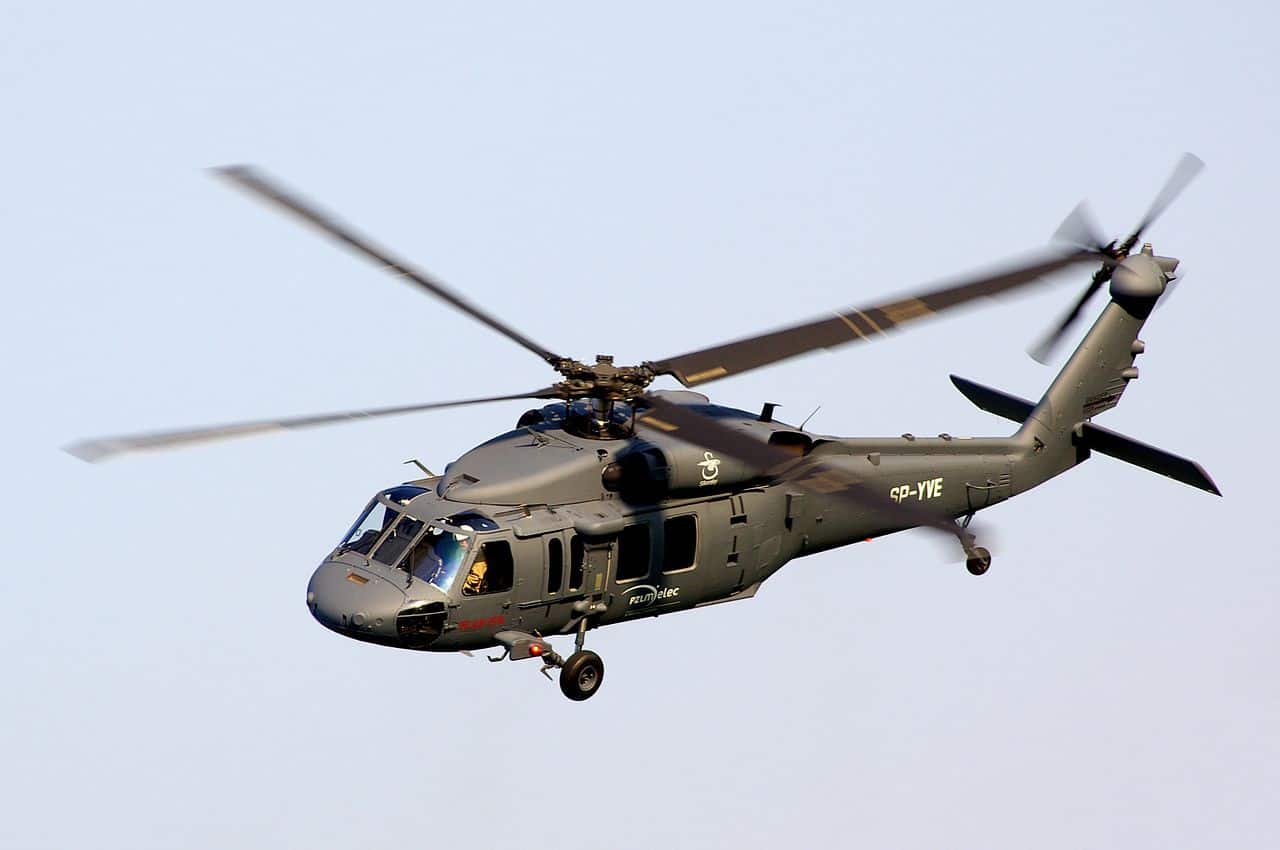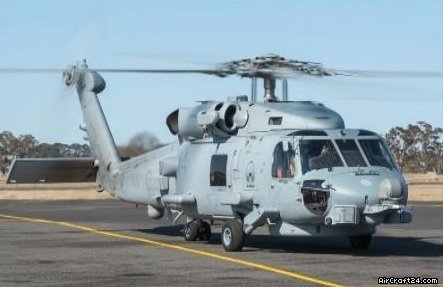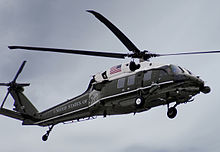Leading Attributes and Benefits of the Sikorsky S 70 Helicopter
Leading Attributes and Benefits of the Sikorsky S 70 Helicopter
Blog Article
High-Performance Multi-Role Rotorcraft Featuring Advanced Cabin Technologies and Integrated Sensor Equipments
The world of rotorcraft innovation has actually seen remarkable advancements in current times, specifically in the realm of high-performance multi-role rotorcraft furnished with sophisticated cabin innovations and perfectly integrated sensing unit systems. These technologies have not only enhanced the functional capacities of rotorcraft yet have likewise dramatically influenced modern air travel procedures on numerous fronts. From improved objective flexibility to improved functional effectiveness, the merging of innovative cockpit modern technologies and incorporated sensor systems has actually ushered in a brand-new era of opportunities for rotorcraft applications. In the following discussion, we will certainly discover the advancement of rotorcraft technology, explore the world of advanced cabin technologies, and take a look at the implications of incorporated sensing unit systems on the functional adaptability and efficiency of contemporary rotorcraft.
Evolution of Rotorcraft Modern Technology
The evolution of rotorcraft innovation has been noted by considerable developments in the rules of aerodynamics, products, and propulsion systems, forming the capacities and efficiency of modern rotorcraft. Wind resistant enhancements have boosted the efficiency and maneuverability of rotorcraft, enabling for boosted rate, agility, and stability throughout flight (sikorsky s 70). Advancements in products, such as the usage of composite materials and advanced alloys, have actually caused lighter yet stronger rotorcraft structures, improving overall performance and resilience. Additionally, advancements in propulsion systems, including much more effective engines and ingenious propulsion technologies, have actually enabled rotorcraft to accomplish greater altitudes, faster speeds, and better payloads.
These innovations have not just transformed the abilities of rotorcraft yet have actually also expanded their applications across numerous industries, including armed forces, industrial, and emergency solutions. The continual advancement of rotorcraft innovation remains to drive development in the area, pressing the borders of what is possible and shaping the future of upright trip.
Advanced Cabin Innovations
Structure upon the fundamental improvements in the rules of aerodynamics, materials, and propulsion systems, the world of rotorcraft modern technology currently moves focus towards introducing Advanced Cabin Innovations. The integration of cutting-edge technologies within the cabin environment plays an important duty in improving the operational abilities, safety, and effectiveness of contemporary rotorcraft. sikorsky s 70. Advanced Cockpit Innovations encompass a vast array of functions developed to supply pilots with enhanced situational awareness, structured data monitoring, and intuitive control user interfaces
One of the key advancements in cabin layout is the implementation of glass cockpits, which replace typical analog assesses with high-resolution displays. These digital systems offer customizable formats, real-time data assimilation, and boosted readability, enabling pilots to accessibility crucial details at a glimpse. Progressed avionics systems, such as fly-by-wire controls and boosted reality display screens, are revolutionizing exactly how pilots communicate with the aircraft, permitting for accurate control and improved decision-making capabilities.


Including advanced cockpit advancements not only enhances pilot performance however also adds to total goal performance and safety in intricate functional atmospheres. By leveraging state-of-the-art technologies within the cockpit, rotorcraft producers are establishing brand-new requirements for functional excellence and goal success.
Integrated Sensing Unit Solutions
With the development of rotorcraft modern technology, the combination of advanced Integrated Sensing unit Systems has actually become paramount in enhancing functional performance and safety. These Integrated Sensor Equipments encompass a wide selection of modern technologies that supply vital information for numerous features such as navigation, security, targeting, and ecological surveillance. By seamlessly incorporating sensing units like radars, electronic cameras, lidar, and infrared systems into rotorcraft, drivers can benefit from boosted situational awareness, enhanced objective capacities, and minimized pilot workload.
One trick advantage of Integrated Sensing unit Equipments is their ability to gather real-time information and offer workable insights to pilots and goal operators. Progressed radar systems can spot and track targets over long distances, allowing for early hazard detection and reliable reaction planning. In addition, incorporating electro-optical and infrared cameras makes it possible for rotorcraft to perform reconnaissance and security missions with accuracy and precision.
In significance, the integration of cutting-edge sensor modern technologies into rotorcraft not just boosts operational efficiency yet likewise adds dramatically to overall objective success and crew safety. As rotorcraft remain to evolve, the function of Integrated Sensing unit Equipment will certainly continue to be at the center of development in the aerospace market.
Functional Adaptability and Effectiveness
Enhancing functional flexibility and effectiveness in rotorcraft is a natural progression from the integration of innovative Integrated Sensing unit Solutions. By leveraging the understandings and information offered by these cutting-edge sensing unit systems, rotorcraft can maximize their performance across various missions and atmospheres.
Functional adaptability encompasses the capability of rotorcraft to adjust to different duties and circumstances efficiently. With innovative cabin technologies and integrated sensor systems, rotorcraft can flawlessly transition in between jobs such as blog here search and rescue, clinical emptying, surveillance, and a lot more. This convenience improves the rotorcraft's capability to satisfy diverse operational needs without calling for considerable reconfiguration.
Effectiveness in rotorcraft procedures is vital for making best use of objective effectiveness and source application. Integrated sensor systems play an essential duty in improving functional effectiveness by offering real-time data on weather conditions, terrain mapping, target tracking, and a lot more. This data allows pilots to make educated decisions promptly, maximize flight paths, conserve fuel, and boost overall goal productivity.
Effect On Modern Aeronautics Operations

Furthermore, the combination of advanced sensors promotes enhanced goal preparation and execution, enabling rotorcraft to do a variety of tasks with boosted accuracy. From search and this page rescue procedures to airborne firefighting and police missions, the abilities of modern rotorcraft outfitted with advanced cabin modern technologies and integrated sensor systems are unrivaled.
Furthermore, the effect of these advancements expands past operational performance to cost-effectiveness and sustainability. By enhancing trip routes, fuel usage, and upkeep schedules, high-performance rotorcraft outfitted with sophisticated cockpit modern technologies and sensing units add to decreasing operational costs and ecological impact, making them vital properties in modern-day air travel procedures.
Conclusion
To conclude, the high-performance multi-role rotorcraft with advanced cabin technologies and incorporated sensing unit systems represents a substantial evolution in aviation modern technology. These innovations boost functional versatility and efficiency, inevitably impacting modern aviation procedures in a positive way. The assimilation of these sophisticated innovations enables improved abilities and performance in numerous objective scenarios, showcasing the proceeded development of rotorcraft technology in the aeronautics sector.
The world of rotorcraft innovation has seen noteworthy improvements in recent times, especially in the realm of high-performance multi-role rotorcraft outfitted with sophisticated cabin modern technologies and seamlessly incorporated sensing unit systems. From enhanced objective adaptability to boosted functional efficiency, the merging of advanced cabin modern technologies and integrated sensing unit systems has ushered in a new era of opportunities for rotorcraft applications. In the complying with conversation, we will discover the advancement of rotorcraft technology, dive into the realm of advanced cabin advancements, and analyze the ramifications of integrated sensor systems on the functional adaptability and effectiveness of contemporary rotorcraft.

Report this page